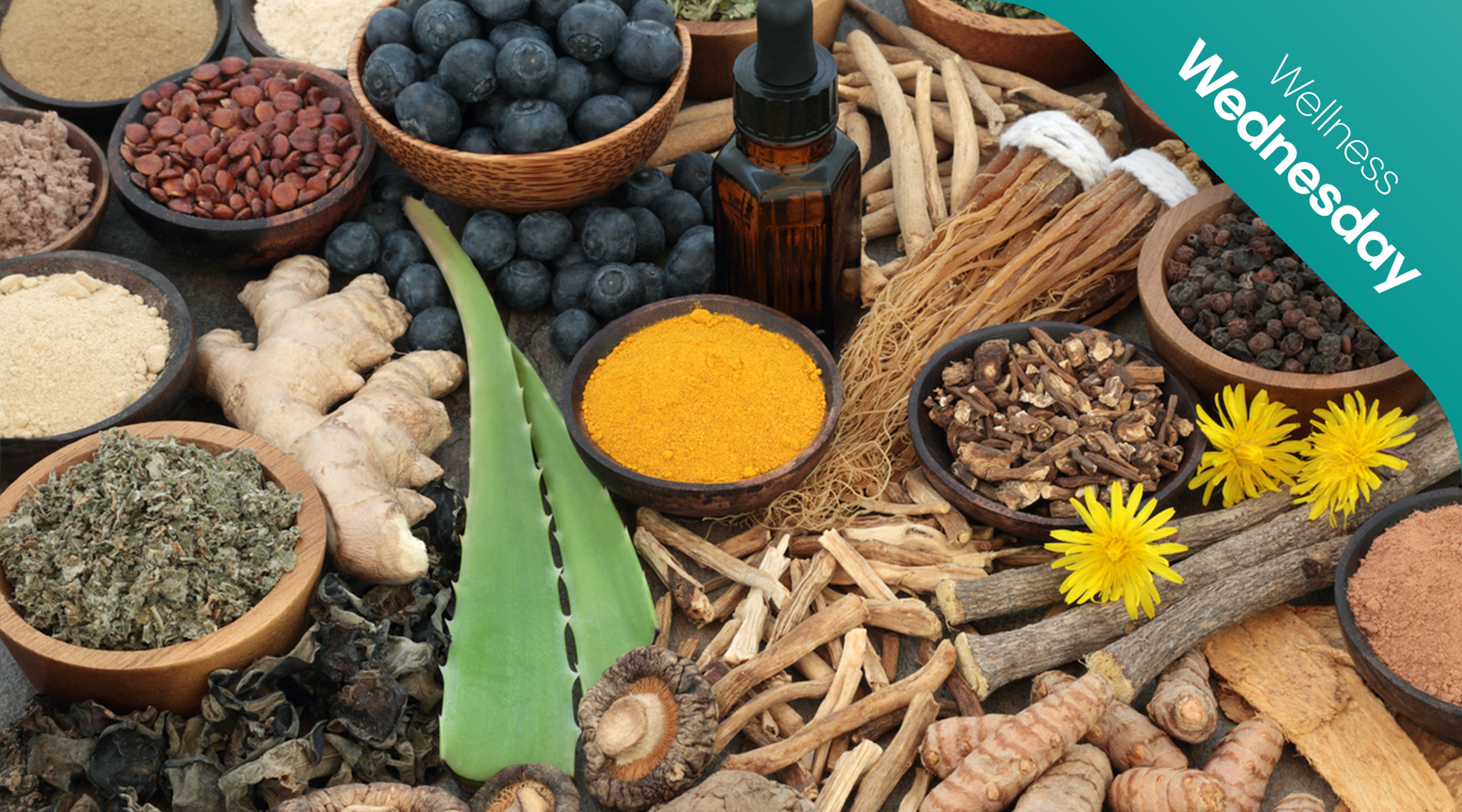What is Ayurveda?
Ayurveda, or Ayurvedic medicine, is an ancient form of medical practice thought to have originated in India around three millennia ago. Considered one of the world's oldest traditional systems of medicine, Ayurveda is a holistic approach to health and wellness that is becoming increasingly popular in Western societies.
Ayurveda is part of ancient Hindu practices with foundations in the schools of Hindu Philosophical teachings (Vaisheshika) and logic (Nyaya), and the manifestation framework, Samkhya; however, Ayurvedic medicine was practised even before these schools were established. It is believed to have divine origins, introduced by the Hindu god, Brahma, the creator of the universe, who is said to have passed on the knowledge to ancient sages.
Ayurveda meaning and basis
The term “Ayurveda” is derived from the Sanskrit words “ayus”, meaning ‘life’ and “veda”, meaning ‘knowledge’: Knowledge of Life. This ancient system of healing is based on four compilations of knowledge: Yajur Veda, Rig Veda, Sam Veda, and Atharva Veda.
The Vedas describe medicinally useful plants and therapeutic techniques, partly through poems known as Shlokas. The knowledge of the four Vedas is said to have been compiled by Agnivesha, a legendary Hindu sage, and later edited by ancient physicians, including Charaka, who is considered one of the principal contributors to Ayurvedic medicine.
The most respected compilation of Ayurveda is therefore known as Charaka Samhita which, together with the Sushrata Samhita which describes the science of surgery, is still widely used by practitioners of traditional medicine.
What is a Dosha in Ayurveda?
According to Ayurveda, the universe is composed of five elements: Vayu (air), Jala (water), Aakash (space), Prithi (earth), and Teja (fire). These elements, referred to as the Pancha Mahabhoota, form the three basic humours in the human body: Vata dosha, Pitta dosha and Kapha dosha - the doshas.
If you’ve ever wondered about this ancient medicinal tradition or come across some of the key terms of the practice, you may have some questions. Such as: “What are Doshas in Ayurveda?” or “What is my dosha?”. Well, the three primary “doshas”, called the Tridoshas, along with five sub-doshas, are believed to control the physiological functions of the body.
According to Ayurveda, the three doshas combine to determine an individual’s constitution. For example, catabolism in the body is governed by Vata, metabolism by Pitta, and anabolism by Kapha.
Every person is made from a unique combination of the doshas, but one or two are usually dominant. Ayurvedic tradition states that achieving balance between the three primary doshas will create equilibrium in the mind and body, promoting good health. In contrast, imbalances in the doshas are said to result in illness and disease.
What is Vata in Ayurveda?
The Vata dosha is the Ayurvedic mind-body element associated with air and space. It is said to be the force of communication and movement in the body, governing various processes, including comfortable limb and muscle movement, regular breathing, appetite, bowel function, cellular transport and electrolyte balance. The forces of Vata also influence the other doshas.
What is Kapha in Ayurveda?
The Kapha dosha is associated with the earth and water. This dosha is said to embody nourishment and growth, stamina, and lubrication in the body, and governs emotional aspects such as our ability to feel contentment. Kapha is responsible for managing assimilation, which can mean the physical absorption of nutrients, as well as the ability to digest and understand information.
What is Pitta in Ayurveda?
The Pitta dosha is linked to the fire and water elements and is represented by heat energy in the body. As the dosha responsible for metabolism, Pitta governs the processes of digestion, regulates body temperature, optic nerve coordination, and hunger and thirst.
The physical and emotional manifestations of the doshas
The doshas are said to manifest in the body in both physical and emotional ways. For example, those with dominant Vata may have low body weight and poor circulation, and be impulsive, creative, and dynamic. Individuals with dominant Kapha are said to be more robust in build, and warm and compassionate by nature, while those with dominant Pitta may be athletic, strong, and fiery by nature.
According to Ayurveda, when the doshas are out of balance, a number of physical and emotional symptoms may become apparent. Out of balance:
- Vata may produce fear, anxiety, and restlessness, as well as bloating, dehydration and weight loss.
- Kapha may be associated with feelings of insecurity and sluggishness, and physical symptoms such as weight gain and food cravings.
- Pitta is linked to anger and irritability in addition to acid reflux, indigestion, nausea and digestive problems such as constipation or diarrhoea.
Ayurvedic practitioners aim to determine an individual’s doshas by considering a number of physical, mental, and behavioural characteristics: some might call this an Ayurveda dosha test. The purpose of identifying an individual’s doshas is to gain insight into the Ayurvedic rituals that could help to balance them and so promote better health and well-being.
But Ayurveda isn’t all about the three doshas. There are also the Sapta Dhatus (the seven types of tissue in the body), the Tri Malas (the three waste products of the body: faeces, urine, and sweat), the Trayo Dosa Agni (the biological fire, closely linked to Pitta), and Ojas.
What is Ojas in Ayurveda?
In Ayurveda, Ojas refers to ‘vigour’ - or what we might describe as strength, energy, or enthusiasm. It is considered a vital energy that helps to nourish all tissues and ensure the optimal functioning of the mind, body, and spirit. Traditionally, Ojas is said to be derived from the food we eat and produced only after the tissues of the body (the Dhatus) are nourished. However, Ojas levels can also be boosted by following a generally healthy and fulfilling lifestyle.
Ayurveda in practice
Ayurvedic medicine focuses on the relationship between the body and the elements of nature to maintain balance and equilibrium in the mind and body. According to Ayurveda, optimal health (Svasthya) is “to be established in one’s self or own natural state.” This is achieved through the adoption of various means, which may be referred to as the ritual of Ayurveda.
Ayurveda Diet: Balancing the doshas
Even in modern medicine, the importance of nutrition is acutely acknowledged; However, diet is among the most important aspects of Ayurvedic medicine - particularly when it comes to balancing the doshas. Traditionally, food classifications are based on their organoleptic properties and their impact on the psychological constitution of an individual.
Food (ahara) is defined as one of the three pillars of life - in addition to sleep and a regulated sex life. The appropriateness of different foods is determined by their flavours, processing, and amount, as well as the situation (i.e., time and place) in which they are consumed and their suitability to different physical and mental constitutions, as defined by the five elements (air, space, earth, water, and fire) and the Tridosha.
What is Pancha karma in Ayurveda?
Ayurveda also employs the Pancha karma method to promote the rejuvenation and cleansing of the body. The Pancha karma is made up of five karmas (actions) that are believed to remove toxins from the body:
- Virechan - a purgation therapy (often using powder and paste preparations) to remove toxins from the liver and gallbladder;
- Vaman - therapeutic emesis (forced vomiting) by use of medicines;
- Basti - use of enemas from medicinal oils;
- Rakta moksha - detoxification of the blood;
- Nasya - administration of medicines through the nasal passage.
What is Ayurveda yoga?
Ayurveda is often applied alongside other traditional systems of health and medicine. This joint approach to health often includes the application of therapies such as homoeopathy and yoga. Like Ayurveda, yoga’s origins can be traced back thousands of years to the Indian subcontinent. Moreover, yoga is also mentioned in the ancient Vedas - specifically the Rig Veda.
Ayurvedic yoga is one of many forms of yoga. It is a personal approach to yoga that is based on the specific needs of an individual - just like Ayurvedic medicine.
You may also have come across the theory of Ayurveda in other therapies. For example, what is Ayurvedic massage? Well, put simply, it is a type of massage therapy that employs medicated herbal oils to promote improved health and well-being. Again, the type of oils used will be determined by each individual’s perceived constitution.
Ayurveda and medicinal plants
Around 90% of Ayurvedic preparations and plant-based, derived from roots, fruits, flowers, barks, seeds, and other plant components. They may come in the form of oils - such as those used in Ayurvedic massages - as well as powders, pastes, and other extracts.
The Hindu system of healing, including Ayurveda, is based heavily on the healing potential of plants. The Rig Veda - the most well-known of the four ancient Vedas - describes 67 medicinal plants, while the Atharva Veda and Yajur Veda describe 293 and 81 medicinally useful plants, respectively - including cannabis!
Cannabis has a long history in India, where it has historically been considered “one of the five sacred plants of the planet Earth”. The ancient text also refers to cannabis as a “source of happiness” and a “liberator”. In traditional Ayurvedic medicine, cannabis is believed to have been used to improve memory and to treat leprosy, among other things.
Final Thoughts
Ayurvedic traditions have survived for thousands of years, with this ancient system of medicine remaining particularly strong in India and its neighbouring countries. While there is a paucity of scientific evidence to support the use of Ayurvedic medicine over conventional therapies, interest in this natural health system, and other forms of alternative medicine, appears to be on the rise.
As the trend toward natural health and wellness continues to gain momentum, could we see more Ayurvedic-based approaches in the Western world?





